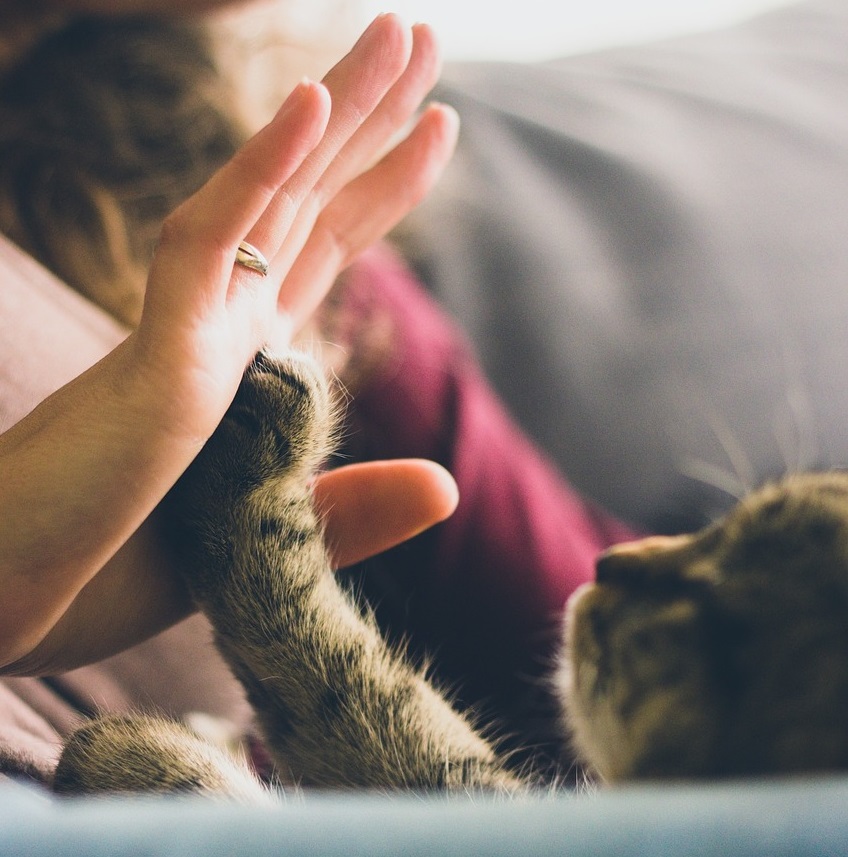A Quick Guide to Clicker Training Your Cat
Last Updated on
Clicker training is a game changer when it comes to teaching your cat.
When I first started training Wessie, I knew very little about clicker training. When I discovered the principles of clicker training and began implementing them in my training process, teaching him to obey commands became far easier! Using a clicker allows you to more easily make connections in your cat’s mind – this means better communication and a faster, simpler training process.
What is clicker training?
The principles of clicker training were first identified by B.F. Skinner and two of his students, Marian Kruse and Keller Breland in WWII, when the three of them were performing research on pigeon training and behaviors. The group observed that the old training methods were too ambiguous – the praise and reward system lacked the crisp, precise clarity necessary to quickly create cognitive connections. Marian and Keller, who later married, coined the term “bridging stimulus” – which refers to this idea of a secondary reinforcer in training, like a whistle or click. It’s a precise, distinct signal that bridges the gap between the nuanced action the animal is learning and the reward.
While some people use a verbal signal like saying “good” or a a visual cue, like a hand signal, the click is a precise, distinct bridging stimulus that you can issue very rapidly, making it an incredibly efficient training tool.
The fundamentals of clicker training
The first step is to establish a connection between the sound of the click and your cat’s favorite treats. All you need to do is gather up your cat, a handful of treats your cat adores, and your clicker.
Let your cat know that you have treats, but don’t give them to your cat until AFTER you’ve clicked the clicker. If your cat doesn’t make the connection in the first few minutes of clicker training, don’t fret! Keep the clicker on hand whenever you’re hanging out with your cat and give it a squeeze every time you give them a treat. Eventually, your cat will associate the click with the treat.
A really important part of clicker training is consistency! Never click the clicker without giving your cat a treat immediately afterwards. Otherwise, they’ll just get confused.
Eventually, you can incorporate this click – treat system into your training program.
Using the click for training
Traditionally, training involves the signal-action-reward system or sometimes a signal-action-praise-reward system.
In other words, issue the command, let your cat perform the desired action, and provide a reward. What’s special about clicker training is that it adds a highly distinct bridging stimulus – a link between the action and the reward. When you train with a signal-action-CLICK-reward system, you make it worlds easier for your cat to understand what’s happening.
The clicker helps your cat to understand WHY they’re getting a treat.
A click is a loud, distinct noise that is always directly associated with receiving a treat.
Let’s look at how this would work during training.
Training Your Cat with a Clicker
- Issue the command.
- Do NOT give them a treat or click the clicker until after they’ve done the desired action. The action can be performed in a number of different ways: you may wait for your cat to do it on their own, manually position them (press their rear down in the case of the “sit” command, for example), or encourage them to move into the position by luring them with a treat.
- When your cat does what you want them to do, click the clicker immediately! While the action you’re training your cat to perform isn’t necessarily important to your cat, they have already learned that the click is a special sound that means a treat is on the way.
- And right after the click, give your cat a treat.
- Repeat this process until your cat makes the connections.








